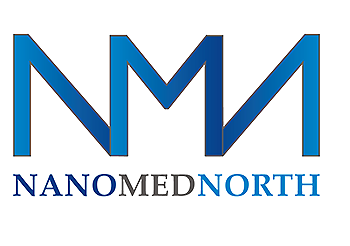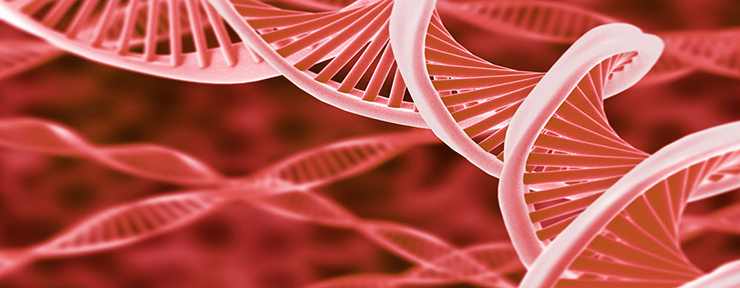We are assisting the organization ETPN (Nanomedicine European Technology Platform) in promoting this NANOTECMEC matchmaking event:
The ERA4Health NANOTECMEC call is now open! After a round of final revisions in which you’ve been asked to contribute, the awaited ERA4Health Call for transnational research proposals, titled “Nano and Advanced Technologies for Disease Prevention, Diagnostic, and Therapy (NANOTECMEC),” has recently been pre-announced. Application will open from November 21, 2023. NANO-TEC-MEC aims at (1) pioneering translational research projects highlighting innovative approaches in nanomedicine, (2) boosting transnational collaboration combining academic research with clinical/public health research or R&D ventures in businesses of all sizes.
CALL TEXT: All details, including the call text, eligible countries, topics of relevance, are available on the ERA4Health website.
INFODAY: Don’t miss the NANOTECMEC Infoday webinar on November 21st: more information here.
Join our special NANOTECMEC matchmaking event on Dec. 7th!
Why should you participate in the NANOTECMEC Matchmaking?
- Collaborative Networking: Engage with potential partners (even outside of the ETPN community) and form consortia tailored to the objectives of the call.
- Focused Preparation: Align your organization’s goals and capabilities with like-minded entities to construct compelling project proposals.
- Expanding Horizons: Even if you don’t have a specific project in mind yet, express your interest, seek the expertise or partners you lack, and identify potential areas of collaboration.
Event Format: Highly interactive, the event will take place on Zoom Events, with an engaging component on Miro for ideation and collaboration. Participants will have the opportunity to discuss and submit precise project ideas and express their needs for partners in plenary sessions, and through dedicated channels.
FREE REGISTRATION
- Participation in NANOTECMEC Matchmaking is mandatory but free by clicking on this link
- This event, organized by ETPN & ERA4Health, is open to all interested parties, aligned with the call’s objectives and eligibility criteria.
PREPARE AN EFFICIENT MATCHMAKING EVENT
- Please kindly complete this Online Preparation Form
- Deadline: December 3rd, 6PM (CET)
Recent highlights from PRNANO, CLINAM’s free, open-access, peer-reviewed international journal:
Green Synthesized Nanoparticle Based Drug Delivery: Recent Trends and Future Prospects
Abstract
Nanotechnology has revolutionized several scientific disciplines with its ability to engineer and modify materials at the nanoscale. Due to its environmental friendliness and prospective uses across many industries, green nanoparticle synthesis has attracted much attention. Green nanoparticle synthesis produces nanoparticles by using natural resources instead of toxic chemicals and energy-intensive processes, such as plants, microorganisms, and biomolecules.
Recent trends include utilizing microbes, biomolecules including enzymes and proteins, and plant extracts as reducing and stabilizing agents. This process gives nanoparticles unique features that increase their potential applications across medicine, catalysis, and agriculture. A notable fusion of ancient wisdom and modern science can be seen in applying nanotechnology to Ayurveda.
Ayurveda focuses on a comprehensive approach to health and well-being, using natural medicines and individualized care. Using environmentally friendly nanoparticles, ayurvedic may improve treatment outcomes, drug-delivery systems, and diagnostic procedures. The bioavailability and targeted administration of Ayurvedic medicines may be enhanced using nanoparticles, maximizing their efficacy while reducing potential adverse effects. This review examines current trends in the environmentally friendly production of nanoparticles, emphasizing its ethical implications and cutting-edge approaches. To develop a creative synergy between conventional wisdom and contemporary scientific advancements, it also explores merging nanotechnology with Ayurveda, the traditional Indian holistic healthcare system.
Download this article from Precision Nanomedicine Merging nanotechnology with Ayurveda
Nanotech France 2024 • 05-07 June • P A R I S
International Conference and joint events
We are pleased to announce that the abstract submission is open for the 9th edition of Nanotech France 2024 that will run from 05 to 07 June 2024 in Paris, France.
A Place for Your Research
The Program Committee organizes the technical conference around different topic categories that address research across diverse fields related to nanotechnology and nanoscience from the theoretical to the applied. There is a place for your research in this meeting.
The Professional Value of Presenting at Nanotech France 2024
- Introduce yourself and your Research: Your research represents countless hours of hypothesis, data collection and good decisions. Nanotech France 2024 is the right choice to introduce your discoveries.
- Publishing opportunities: Accepted abstracts will be published online within the conference proceedings. Participants will be offered the opportunity to publish a Conference paper and/or journal paper within international journals with impact factors (Optional, not mandatory) which extends the impact of your work beyond the conference and increase your work visibility.
- Professional Connections: Your talk or poster will be part of a world-renowned technical conference comprised of expert plenary/ keynote speakers and more than 200 technical presentations as well as posters sessions giving you numerous opportunities to expand your professional network.
Don’t miss to be part of a prestigious and comprehensive technical program, Submit your abstract for oral presentation or poster as soon as possible before the 22 December 2023.
Important deadlines
- Abstract Submission Deadline: 22 December, 2023
- Early Bird Registration Deadline: 21 February 2024
- Conference Registration Deadline: 26 April 2024
- Journal papers submission Deadline: 12 July, 2024
Looking to receive your abstract and welcome you in Paris next June 2024.For more information please visit us on www.setcor.org
Prepare and submit your abstract for the 8th Edition of Nanotech France 2023 and its joint events NanoMatEn 2023 and NanoMetrology 2023 that will run from 28 to 30 June 2023 in Paris, France.
Nanotech France 2023 International Conference and joint events. Submit your abstract before the 14 April 2023
This Nanosciences and Nanotechnologies international event brings together researchers, scientists, engineers, business, technical and policy professionals to present the latest results and innovative discoveries, identify priorities, network with key experts from academia and industry and promote research and industrial collaborations. Oral and poster abstracts are invited on the main below topics:
- Nanomaterials Fabrication, Modelling and Characterization
- Nanometrolgy
- Graphene and 2D materials
- Nanoscale Electronics
- Nanotech for Energy and Environment
- Nanotech in Life Sciences and Medicine
- Nanosafety/ Nanotoxicity
Click here for detailed description. More focused sessions/ workshops will be announced soon.
1 februari 2023 13:00 till 15:00 | Föreläsning
Creating Trust in Nanotechnology: a Tetra Pak and NanoSafe4All webinar
Tetra Pak, and the Lund University collaboration initiative, NanoSafe4All, are inviting you to a webinar about trust, communication and collaboration for safe innovation in nanotechnology.
“Working with materials where risks are unknown requires trust, transparency and close collaboration. Together with NanoSafe4All, we want to expand our network of companies and researchers interested in developing sustainable nanotechnologies with safety in focus” says Lars Sickert, Product Life Cycle Management at Tetra Pak, and member of NanoSafe4All.
He continues: “The idea is that this network can work in close collaboration with a future Scandinavian Nanosafety Center initiative, which will aim to provide relevant risk assessments, as well as initiating and supporting research in relevant nanosafety areas, including communication, together with Lund University and other academic institutions in the Nordic countries.”
As the use of nanomaterials is growing, so is the need for more knowledge on safety
The use of nanomaterials is growing rapidly, both through technique development and political initiatives. Yet, it is still difficult for many companies to get an overview of nanosafety risks over the entire product life cycle. Especially in products which does not contain engineered nanomaterials. While there is information, standards and guidelines, on how to handle potential safety issues relating to the production phase and work environment aspects of handling nanomaterials, there is much uncertainty around what happens when products enter the end-of life phase, and how the degradation of products containing nanomaterials can impact the natural environment. These knowledge gaps can pose challenges for companies who want to make use of nanotechnology today, and in the future.
During this webinar, we will discuss how to create trust in nanotechnology and what industry need to work with nanotechnology in a safe and sustainable way. We will also highlight what risk assessments are possible to do today, present the latest research on nanosafety, and discuss how all nanomaterial innovation (including risk handling) is closely related to communication, trust and transparency.
Agenda
13.00 Tetra Pak and nanosafety: presentation of how we work with nanorisk assessments and communication, Lars Sickert, Product Life Cycle Management at Tetra Pak.
13.15 Public perceptions on nano, trust and communication: a research overview, Camilla Nothhaft, Senior Lecturer, Department of Strategic Communication, Lund University.
13.30 Latest developments in nanosafety research (aerosols and operational health and safety, aquatic environments, life cycle perspective, and end of life), Tommy Cedervall, Associate Professor at Biochemistry and Structural Biology, and Mistra Nanosafety programme director, Lund University.
Virtual coffee break
13.45 What can we do today in terms of risk assessments? What gaps need to be addressed in the short and long term? Professor Ian Cotgreave, leader of the Department of Chemical and Pharmaceutical Toxicology at RISE.
14.00 Nanotechnology and the legal frame with a focus on REACH legislation, Steffen Foss Hansen, Associate Professor, Department of Environmental and Resource Engineering, Danish Technical University.
14.15 Panel debate: how do you create trust in nanotechnology and work with nanosafety?
14.45 Open discussion: what does industry need to go forward, what services would you like to see, and how can a future Scandinavian Nanosafety Center support you the best?
15.00 End
The webinar is organised by Tetra Pak and NanoSafe4All, a collaboration initiative led by Lund University, in collaboration with the research programme Mistra Environmental Nanosafety.
Read more about the Mistra Environmental Nanosafety programme on its website
Registration
Recent highlights from PRNANO, CLINAM’s free, open-access, peer-reviewed international journal:
Nanoliposomes as Drug Delivery Systems for Antifungal Therapy
Shathar Alobeidat , Tamara Athamneh
Institute of Nanotechnology, Jordan University of Science and Technology
Abstract
Nanoliposomes are lipid bilayer nanostructures recently gaining popularity as drug delivery vehicles. Their biocompatibility, safety, high entrapment efficiency and drug release profiles have made them suitable candidates for biomedical applications. The treatment of fungal infections is one of the most significantly researched fields in which nanoliposomes (NLPs) find a variety of uses. Although this topic has been referenced in several general reviews, it has never been thoroughly discussed. In ourreview, we give a detailed summary of the recent advancements made in this field, with a focus on encapsulated synthetic and natural antifungal agents for oral, parenteral, and transdermal applications, and the numerous advantages they have over conventional antifungal therapies, recent strategies at sitespecific targeting using targeting moieties, as well as highlighting the safety concerns associated with NLP nanocarriers.
Download this article from Precision Nanomedicine PRNANO
11th International Congress, 12-14 April
BioNanoMed 2023 – Nanotechnology enables Personalized Medicine
• Call for Papers is open!
The three day congress BioNanoMed 2023 on 12 – 14 March 2023 in Graz/Austria will bring together academia, industry, governmental and non-governmental institutions to discuss current, emerging and future trends of ”Nanotechnology for Personalized Medicine”.
You are cordially invited to sponsor BioNanoMed 2023 congress. With this unique opportunity to accommodate the conference in Graz, it serves as an excellent platform to promote your product portfolio and to establish direct links to a broad audience of experts. Please be welcome to join this event! As an exhibitor or sponsor you will make a great contribution to the BioNanoMed 2023!
Different exhibition & sponsoring packages are offered but feel free to ask for individual package deals for your presentation at the BioNanoMed 2023.
Information about the congress you can find on our website www.bionanomed.at the exhibition packages you can find here
BioNanoMed 2023 is jointly organized by Techkonnex – High-Tech Promotion, the University of Graz, Institute Pharmaceutical Technology & Biopharmacy and the Medical University Graz in cooperation with the Johannes Kepler University Linz.

Organised by the Nano Today journal and Elsevier in partnership with Materials Today, the 8th Nano Today Conference seeks to bring together researchers interested in nanoscience and nanotechnology.
Chaired by Paul S. Weiss, Californian NanoSystems Institute, UCLA, CA, USA,this international conference will present the latest research at the multidisciplinary frontier of nanostructured materials and devices.
Oral and poster abstracts are invited on the following topics. Please submit using the online abstract submission system. Abstract Submission Deadline: 11 November 2022
Topics
• Nanoscience and nanotechnology in energy and sustainability, including catalysis, blue & green energy, and remediation
• Nanomedicine, including drug delivery, devices, diagnostics, imaging, therapeutics, and vaccines
• Nano environmental health and safety
• Nanomaterials in reduced dimensions – 0D, 1D, 2D
• Nanobiomaterials and applications
• Nanophotonics and optoelectronic nanomaterials
• Nanostructure synthesis, characterization, modeling, and simulations
• Inorganic nanomaterials, including metal-organic frameworks (MOFs) and related materials
• Quantum information science, sensors, and opportunities
• Self- and directed assembly, and soft nanomaterials
• Sensors, including implantable, wearable, flexible, and brain-machine interfaces
• Young Scientist forum
Contact
NanoMedNorth
Medeon AB, Medeon Science Park
205 12 Malmö
E-mail:
magdalena.almen@medeon.se
Pages



